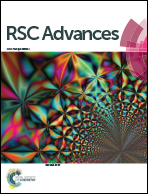Paving a way to suppress hydrogen blistering by investigating the hydrogen–beryllium interaction in tungsten†
Abstract
We have investigated the hydrogen–beryllium (H–Be) interaction and the behavior of Be in tungsten (W) in order to explore the influence mechanism of Be on H using a first-principles method. A single Be atom is energetically favorable sitting at the octahedral interstitial site (OIS) instead of the tetrahedral interstitial site (TIS), and prefers to diffuse along the OIS → TIS → OIS path. Interestingly, it has been demonstrated that there is large binding energy between Be atoms in W (>1 eV), leading to them energetically clustering. This can be attributed to the strong Be–W repulsion and the intrinsic electrophobic properties of Be. Further, it is found Be has significant effect on H behavior in W. On the one hand, the interstitial Be atom can enhance the stability of H in W, and thus it can serve as a trapping center for H, due to the redistribution of electron density induced by Be. This will block H diffusing deeper into the bulk, leading to the decrease of H retention in W. On the other hand, the H trapping capability of vacancy will be severely weakened by Be, because Be will provide electrons to vacancy resulting in the increasing of the electron density. Hence, the Be-V complex only can hold 5H atoms, 58.3% less than that of the Be-free vacancy, and there is no H2 molecule formation. This indicates Be could suppress H bubbles formation in W. Consequently, H retention and blistering in W can be suppressed by doping Be.


 Please wait while we load your content...
Please wait while we load your content...